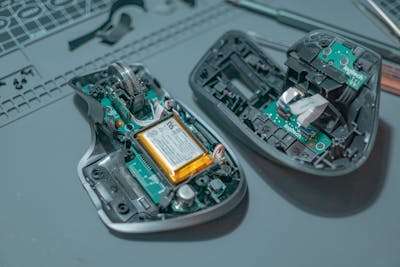
DIY Mobile Phone Battery Reconditioning: Revive Your Phone’s Power
Mobile phones are indispensable in today’s world, and their batteries are at the heart of their functionality. Over time, mobile phone batteries degrade, holding less charge and requiring more frequent charging. While replacement is sometimes necessary, DIY battery reconditioning can be a cost-effective way to revive your phone’s power and extend its battery life. This guide focuses specifically on DIY reconditioning for removable mobile phone batteries, as non-removable batteries require specialized tools and techniques that are often best left to professionals.
Understanding Mobile Phone Battery Degradation: It’s Not Just Age
Mobile phone batteries, typically Lithium-ion (Li-ion) or Lithium-polymer (Li-po), degrade due to several factors, not just age. While age plays a role, other factors contribute to battery decline:
- Overcharging: Consistently charging your phone to 100% and leaving it plugged in can stress the battery and accelerate degradation.
- Deep Discharging: Regularly letting your phone’s battery drain completely before charging can also shorten its lifespan.
- Heat Exposure: Exposing your phone to high temperatures, such as leaving it in direct sunlight or in a hot car, can damage the battery.
- Charging Habits: Frequent short bursts of charging, rather than allowing the battery to discharge somewhat before recharging, can also contribute to degradation.
Is DIY Mobile Phone Battery Reconditioning Safe and Effective?
Reconditioning removable mobile phone batteries can be effective, but it’s essential to proceed with caution. Li-ion and Li-po batteries are more sensitive than lead-acid batteries, and improper handling can pose a safety risk. Only attempt DIY reconditioning on removable batteries. Non-removable batteries are integrated into the phone and require specialized tools and expertise to access safely.
Important Safety Precautions:
- Work in a Well-Ventilated Area: Battery fumes can be harmful.
- Wear Safety Gloves and Eye Protection: Protect your skin and eyes from potential battery leaks or spills.
- Avoid Puncturing or Disassembling the Battery: This can lead to fire or explosion.
- Do Not Use Excessive Force: Be gentle when handling the battery.
- If the Battery is Swollen or Damaged, Do Not Attempt Reconditioning: Dispose of the battery safely.
Methods for Reconditioning Removable Mobile Phone Batteries (Proceed with Caution):
The methods for reconditioning mobile phone batteries are different from those used for lead-acid batteries. The Epsom salt and similar methods are not appropriate for Li-ion or Li-po batteries. The focus is on optimizing charging cycles and minimizing stress:
- Optimized Charging Cycles:
- Partial Charging: Instead of fully charging to 100%, try charging to 80-90% most of the time.
- Avoid Deep Discharges: Don’t let your phone’s battery drain completely before charging. Charge it when it reaches around 20-30%.
- Remove the Battery After Charging: If your phone allows it, remove the battery from the charger once it’s fully charged to prevent overcharging.
- Battery Calibration:
- Discharge and Recharge: Fully discharge the battery (but not completely to zero) and then fully recharge it. This can sometimes recalibrate the battery’s charge indicator and improve accuracy. However, do this sparingly, as deep discharges can stress the battery.
- Cooling the Battery:
- Avoid Heat: Let the battery cool down if it gets hot during charging or use. Heat is a major contributor to battery degradation.
DIY Mobile Phone Battery Reconditioning Kit: What You Don’t Need
Unlike lead-acid battery reconditioning, you don’t need Epsom salt, distilled water, or a desulfator for Li-ion or Li-po batteries. The primary “tools” are good charging habits and attention to temperature.
What You Might Need:
- A High-Quality Charger: A charger with good voltage regulation can help prevent overcharging.
- Battery Testing App (Optional): Some apps can provide information about your battery’s health and charge cycles.
How to Recondition a Mobile Phone Battery That Won’t Hold a Charge:
- Check for Physical Damage: If the battery is swollen, leaking, or otherwise damaged, do not attempt reconditioning. Dispose of it safely.
- Clean the Battery Contacts: Gently clean the metal contacts on the battery and in the phone using a soft, dry cloth.
- Try Optimized Charging: Follow the partial charging and avoid deep discharge guidelines above for several charge cycles.
- Calibrate the Battery (Sparingly): Perform the discharge and recharge cycle a couple of times, but avoid doing this too frequently.
- Monitor Temperature: Ensure the battery doesn’t get excessively hot during charging or use.
Mobile Phone Battery Reconditioning Near Me: When to Seek Professional Help
For non-removable batteries or if you’re uncomfortable working with batteries yourself, it’s best to consult a professional phone repair service. They have the specialized tools and expertise to handle battery replacements and other phone repairs safely.
Conclusion: Extending Mobile Phone Battery Life Responsibly
While DIY mobile phone battery reconditioning can be a cost-effective option for removable batteries, it’s crucial to prioritize safety and understand the limitations. The best approach is to focus on good charging habits and temperature management to prolong battery life in the first place. If you’re dealing with a non-removable battery or are unsure about the process, seek professional help. Remember, battery safety is paramount.
